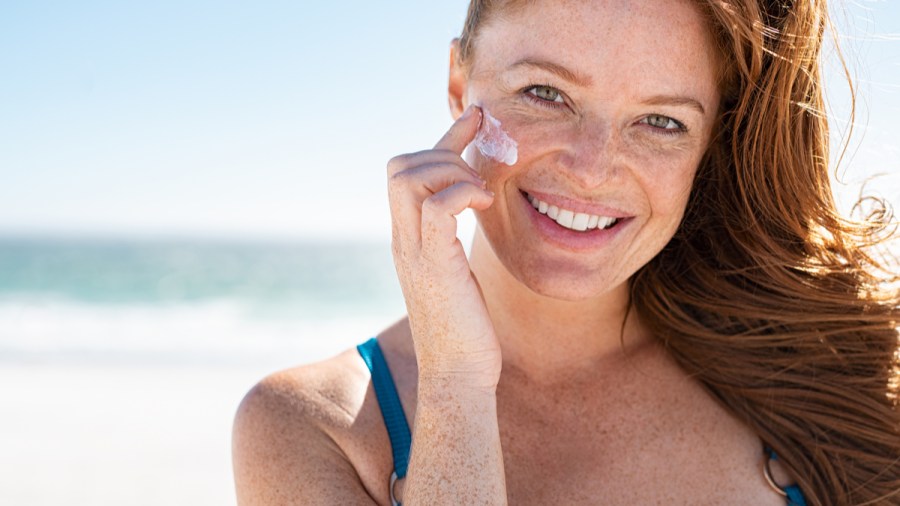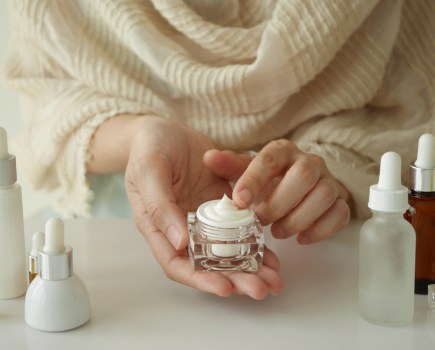Hyperpigmentation including sun spots or age spots can appear on your face and body over time. Find out how to avoid them and treat them with tips from Dr Richard Blackburn, Professor at the University of Leeds and co-founder of skincare brand Dr. Craft
With ageing and chronic sun exposure, human skin can develop uneven and excessive pigmentation, known as hyperpigmentation.
It is caused by an excess production of melanin. This is the primary pigment responsible for producing colour in the eyes, skin, and hair.
With ageing, melanin-producing cells become increasingly concentrated in certain areas, rather than evenly spread out. When UV light stimulates these cells hyperpigmentation occurs where the concentration of the cells is greater.
What causes hyperpigmentation?
Hyperpigmentation effects caused by exposure to the sun are often known as sun spots or age spots. They appear mainly on body parts that are frequently exposed to UV light, such as the face, neck, décolleté, hands and arms.
People with darker skin tones are more prone to hyperpigmentation, especially with excess sun exposure.
A related form of hyperpigmentation is post-inflammatory hyperpigmentation. This is where dark and discoloured spots appear after non-UV related skin injuries, including acne and eczema.
Protect yourself from the sun
Because hyperpigmentation is primarily caused by long-term exposure to the sun, protection against UV light is the most significant prevention step.
The World Health Organization advises that sun protection should be used when the UV Index (a measure of the erythemal UV radiation at Earth’s surface) is 3 or higher. In the UK, a UV Index of 3 or higher is typical between 11am and 3pm from early April to late September. You can access a daily UV forecast from The Met Office.
To give adequate skin protection against the effects of sun damage, not least hyperpigmentation, sunscreens that provide broad-spectrum UV protection are recommended, notably those with an SPF of at least 15 and high UVA protection. Try the REN Clean Screen Mineral SPF 30. (£32, renskincare.com)
Not just for holidays and summertime
We’re all familiar with using sunscreens on holiday and during the summer, but not everyone thinks about applying sunscreens every day, especially in the UK.
One interesting and convenient product is Colourscience Sunforgettable Total Protection Brush On Shield (£46.50, colorescienceuk.com) – this brush on mineral sunscreen provides broad spectrum protection with 4* UVA protection and UVB protection of SPF 50. It can be applied in one convenient, on-the-go application, alone or over makeup, and can be topped up throughout the day.
What about when the damage has been done?
Unfortunately, not all sun exposure and skin damage can be prevented, but there are several different types of cosmetic products that can help to reduce hyperpigmentation after it has occurred.
Regular acid peels can help reduce the appearance of dark spots and scarring. Alpha-hydroxy acids (AHAs) such as glycolic acid and lactic acid work by removing dead skin cells promoting fresher and brighter skin, while beta-hydroxy acids (BHAs), such as mandelic and salicylic acid, help to refine pores and clear blockages.
Q+A’s Apple AHA Exfoliating Gel (£8.50, qandaskin.com) is a combination of naturally occurring malic and lactic acid, alongside apple fruit extracts and glycolic acid, to provide smoother, brighter skin. The exfoliator is gentle and won’t strip your skin of moisture, as it protects and strengthens your skin whilst in action.
Retinol is often reported as “a must” when dealing with hyperpigmentation, which works at a cellular level to help reduce hyperpigmentation and smooth the appearance of scarring. Unfortunately, for many users retinol has significant undesired side-effects, such as itching, burning and stinging. It also significantly increases skin sensitivity to UV rays. Retinol is often recommended to be introduced into a skincare routine slowly due to these issues.
An alternative to retinol
However, nature has provided a powerful alternative to retinol that can improve the appearance of hyperpigmentation without the side effects.
Bakuchiol is found in the seeds of Psoralea corylifolia (babchi), an ancient medicinal plant originating from India and China used in Ayurvedic medicine for centuries and has become known as a natural alternative to retinol.
Bakuchiol has powerful skin benefits and helps improve the appearance of UV-related skin damage including sun spots. A 12-week clinical trial conducted by a leading US university showed that bakuchiol significantly decreased skin hyperpigmentation on the face.
On average, participants using bakuchiol reported a 29% improvement in skin tone after 12 weeks. The clinical trial compared the effects of both bakuchiol and retinol, and it was observed that the anti-ageing performance was very similar, both significantly reducing fine lines and wrinkles as well as hyperpigmentation.
However, retinol caused significant undesired side-effects in users, such as itching, burning and stinging, whereas none of these side-effects are observed with the use of bakuchiol.
Sustainable and organic ingredients
Our Dr. Craft Bio-Bakuchiol range uses a world-first organic extract of bakuchiol. It has been developed using innovative green chemistry to develop sustainable, clean extraction processes to produce safe, highly pure, sustainable, and organic bakuchiol.
If hyperpigmentation is a concern, I’d recommend the Dr. Craft Bio-Bakuchiol Bio-Bakuchiol & Rosehip Facial Oil , (£42, drcraft.co.uk) which contains a double concentration of organic bakuchiol (compared to Dr. Craft Bio-Bakuchiol Face Cream) to provide an enhanced anti-age treatment, targeting hyperpigmentation.
Organic bakuchiol is dissolved in organic grapeseed oil, which naturally contains some of the highest linoleic acid levels of any natural oil. This makes it highly moisturising and non-comedogenic for rapid absorption without a greasy residue.
The product also contains organic rosehip seed oil. This is rich in vitamins A and E, as well as linoleic and linolenic acid, which assists with skin cell regeneration.







